As an Amazon Associate I earn from qualifying purchases. See Full Disclosure Here
Essential oils are concentrated plant extracts that capture the natural aroma, flavor, and beneficial properties of the plants from which they are derived.
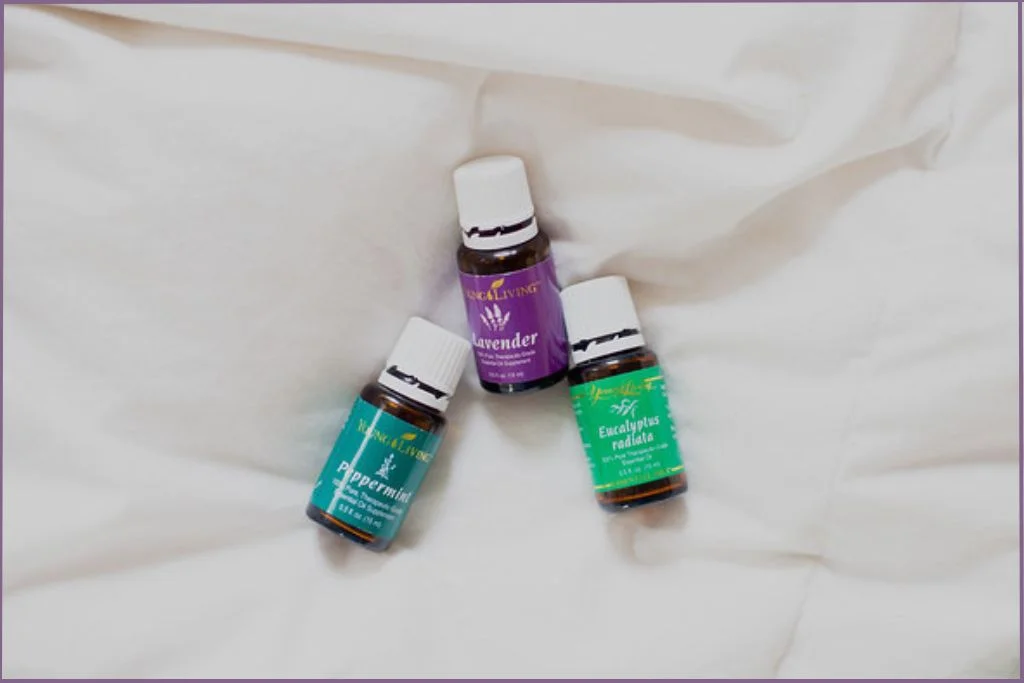
These extracts have gained immense popularity for their diverse uses, from aromatherapy to skincare and natural health remedies. If you’ve heard about them but are wondering what are essential oils and what they do, this guide is for you.
It’s designed to help beginners to aromatherapy understand the basics of essential oils, their benefits, and how to use them safely.
Table of Contents
Understanding Essential Oils & Why Plants Produce Them
Plants produce essential oils naturally for different reasons.
Some plants produce essential oils as a defense mechanism. The aroma of these oils repels invading organisms such as bacteria, keeping the plant safe from harm.
In some plants, the oils primarily act as healing mechanisms, helping the plant to regenerate after any damage. When a plant part is bruised or damaged, it starts secreting essential oils, initiating the healing process.
Other plants produce essential oils through their flowers and flower parts. The aroma of the oil attracts insects, which encourages pollination and re-creation.
The essential oil extracted from each plant is unique to that particular plant and is composed of chemical compounds or a combination of these compounds in a ratio specific to each oil.
Each type of oil in turn has its own unique properties and therapeutic benefits depending on its molecular composition.
Which Plant Parts Are Used To Extract Essential Oils?
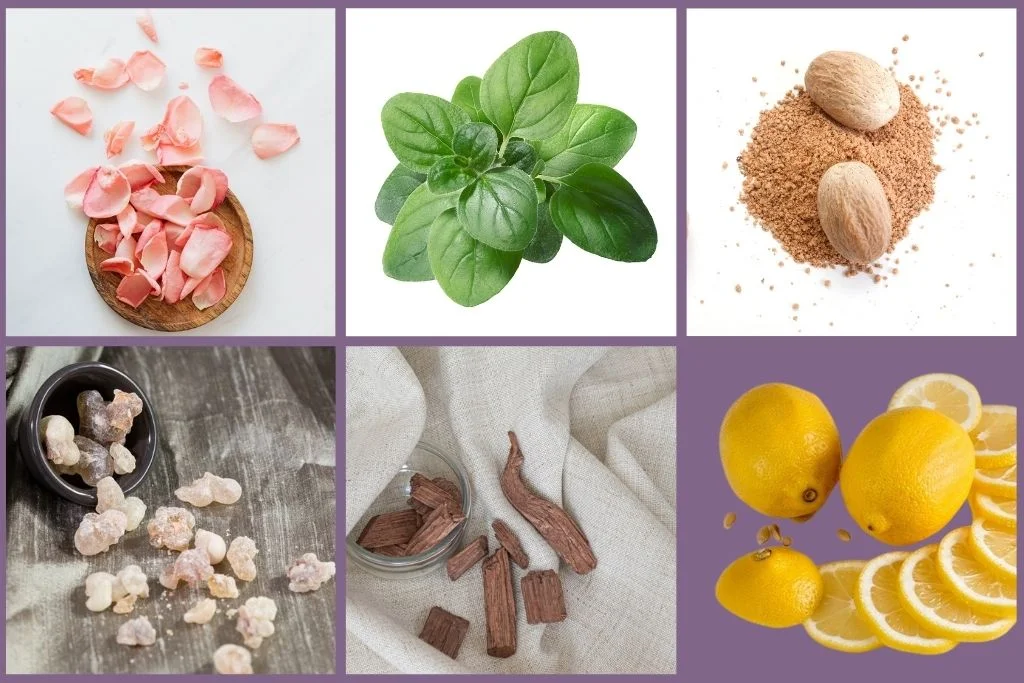
Essential oils may be extracted from various plant parts – flowers, leaves, bark, fruit, roots, or resin. The plant part used to extract the oil depends on the type of plant.
For instance, lavender essential oil is extracted by steam distilling lavender flowers, while sandalwood essential oil is extracted from the bark of the sandalwood tree. Lemon essential oil is obtained by cold pressing the peel of lemons.
Certain plants can produce multiple chemical variants of essential oils that are extracted from different parts of the same plant. For example, cinnamon essential oil is obtained from the bark of the cinnamon tree while cassia oil is extracted from the leaves of the cinnamon tree. Both oils have slightly different aromas and healing properties.
Essential oils have a much higher concentration of components as compared to the plant part from which it is extracted. This is because it takes a lot of raw material to extract a drop of essential oil.
It can take as much as hundreds of pounds of plant materials to extract as little as an ounce of essential oil. Take peppermint essential oil for example. One drop of the oil contains the equivalent of about 25 cups of peppermint tea!
The large amount of raw material used to extract the oil also explains why essential oils cost so much. Imagine this – it takes as much as 30 pounds of lavender herbs to extract about 15 ml of lavender essential oil.
How Essential Oils Are Extracted
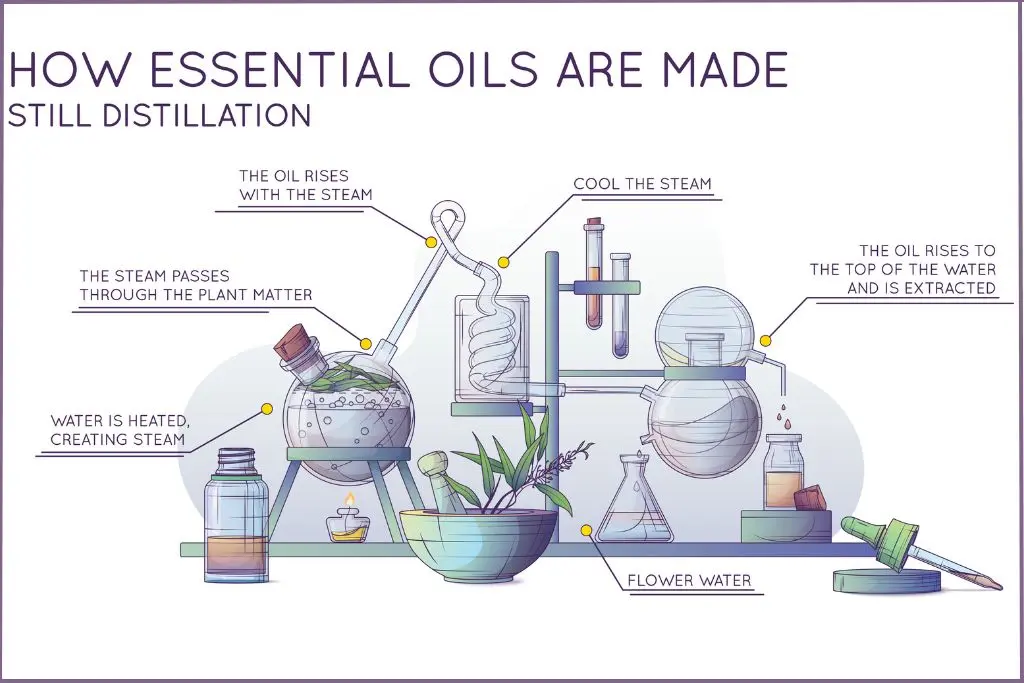
Essential oils are extracted from plants through various methods, each designed to capture the plant’s aromatic and therapeutic properties. Here are the most common extraction techniques:
Steam Distillation
This is the most widely used method. In this process, steam is passed through the plant material, causing the essential oils to evaporate.
The steam-oil mixture is then condensed back into a liquid, where the essential oil is separated from the water.
Cold Pressing
Mainly used for citrus oils like lemon and orange, cold pressing involves mechanically pressing or squeezing the plant material to release its essential oils.
This method retains the natural scent and properties of the oil without heat exposure.
Solvent Extraction
For delicate flowers such as jasmine or rose, solvent extraction is used. Plant material is soaked in a solvent to dissolve the essential oils.
Afterward, the solvent is evaporated, leaving behind a concentrated essential oil called an “absolute.”
CO2 Extraction
This modern technique uses carbon dioxide under high pressure to extract essential oils. When the pressure is reduced, the CO2 returns to its gaseous state, leaving a pure, highly concentrated oil behind.
This method is often used for oils with a more complex aroma, like frankincense.
Maceration
In this method, plant material is soaked in a carrier oil or fat to absorb the essential oil. The mixture is then heated and filtered to separate the essential oil from the plant material. It’s less common but used for certain flowers and herbs.
Each method preserves the unique essence of the plant, resulting in pure, potent essential oils that carry the plant’s natural benefits.
Related: Essential Oil Extraction Methods: The Science Behind The Scents
How Do Essential Oils Work?
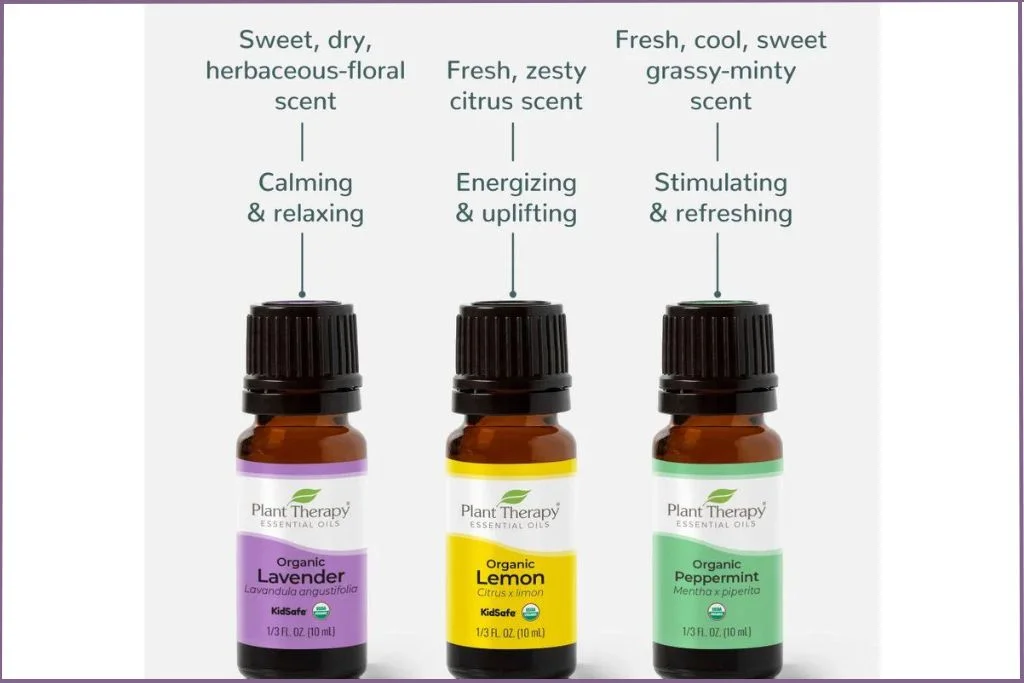
The primary way essential oils affect the body is through the olfactory system, which is linked to the limbic system in the brain.
The limbic system controls emotions, behavior, and long-term memory, which explains why certain scents can evoke strong emotional responses or memories.
When inhaled, essential oil molecules are absorbed by the receptors in the nasal cavity and transmitted to the brain. This can lead to various effects, such as calming anxiety, improving mood, or enhancing focus.
When applied topically, essential oils can penetrate the skin and be absorbed into the bloodstream, where they may provide localized benefits, like soothing sore muscles or improving skin health.
Common Uses of Essential Oils
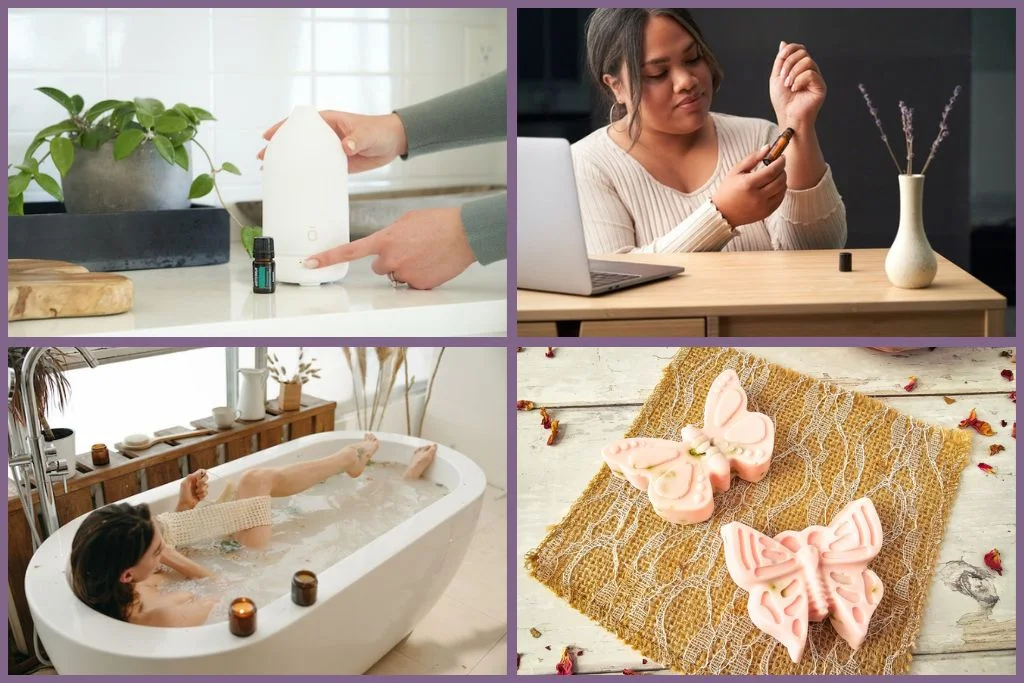
Aromatherapy
Aromatherapy involves the use of essential oils to influence mood, relax the mind, or energize the body.
Oils like lavender and chamomile help promote relaxation, while citrus oils such as lemon and orange are uplifting and invigorating. Essential oil diffusers are commonly used to disperse the aroma throughout a room, creating a soothing environment.
Skincare & Beauty
Essential oils like tea tree, frankincense, and rose are popular in skincare routines for their antimicrobial, anti-inflammatory, and rejuvenating properties. Tea tree oil, for instance, is commonly used to treat acne, while rose oil helps to hydrate and brighten the skin.
Health & Wellness
Essential oils are also used to support overall health. Peppermint oil can help with digestion and headaches, while eucalyptus oil is commonly used for respiratory health, especially during cold and flu season. Massaging diluted essential oils into the skin can also relieve muscle tension and joint pain.
Household Cleaning
Many essential oils have natural antimicrobial properties, making them a great addition to homemade cleaning products. Oils such as lemon, eucalyptus, and tea tree are often used to create all-natural, chemical-free cleaners that can disinfect surfaces and purify the air.
Popular Essential Oils for Beginners
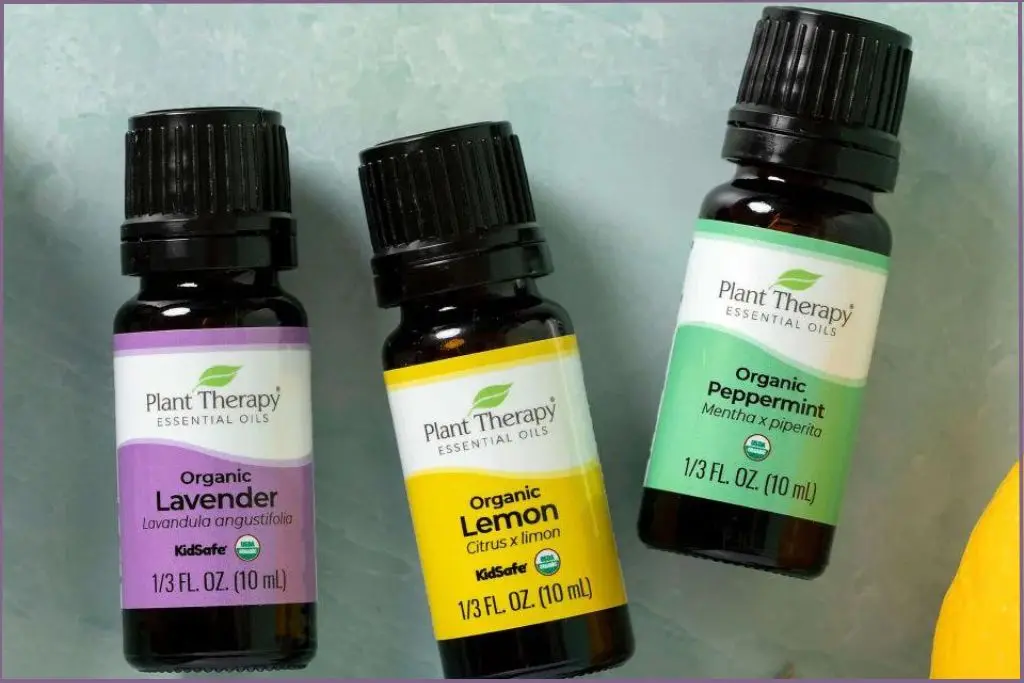
For beginners, it’s helpful to start with a few versatile essential oils that can be used in multiple ways:
Lavender: Known for its calming and relaxing properties, lavender oil is ideal for reducing stress, improving sleep, and soothing irritated skin.
Lemon: Known for its cleansing and uplifting properties, lemon oil can purify the air, boost mood, and energize your surroundings. It’s commonly used in diffusers or homemade cleaning solutions.
Peppermint: An energizing oil, peppermint can improve focus, relieve headaches, and support digestion. It’s often used in diffusers to stimulate the mind.
Tea Tree: Famous for its antibacterial and anti-inflammatory effects, tea tree oil is a go-to for acne treatment and cleaning purposes.
Eucalyptus: Best known for supporting respiratory health, eucalyptus oil can be used in steam inhalations or diffusers to clear sinuses and ease congestion.
Roman Chamomile: A soothing oil, Roman chamomile enhances sleep quality, reduces stress, and promotes relaxation. It’s often used in bedtime routines to calm the mind and body.
Frankincense: A grounding oil, frankincense is ideal for meditation and spiritual practices, helping to calm the mind and deepen focus. It’s also used to support emotional balance.
Rose: With its romantic and uplifting scent, rose oil is known as a natural aphrodisiac and mood enhancer. It’s often incorporated into skincare routines for its hydrating and rejuvenating properties.
Geranium: A balancing oil, geranium supports skin health by improving complexion and promoting healing. It’s frequently used in beauty products to nourish and soothe the skin.
How to Choose the Right Essential Oils for Your Needs: Factors to Consider
With so many different essential oils available, each with its own unique properties and benefits, it’s important to choose the right oil for your specific needs.
For example, lavender is the best essential oil for stress relief and sleep.
On the other hand, peppermint is the best essential oil if you’re using aromatherapy to keep you awake and energized. Diffusing peppermint essential oil late in the day can disrupt your sleep patterns.
In addition to the type of essential oil, it’s also important to consider the quality of the product.
How To Buy Essential Oils
Not all essential oils are created equal. It’s important to look for high-quality, pure essential oils that are free from synthetic additives or fillers. Here are a few tips to help you choose the best oils:
Check the label: Look for the botanical name of the plant, country of origin, and extraction method. If these details are missing, the oil may not be pure.
Third-party testing: Many reputable essential oil companies provide third-party testing results to confirm the purity of their oils.
Avoid synthetic fragrances: Be wary of oils labeled as “fragrance oils” or “perfume oils,” as these are often synthetic and lack the therapeutic benefits of pure essential oils.
This guide walks you through the 10 things to look for when buying essential oils.
Only buy essential oils from reputed brands that make 3rd-party testing certificates easily available on their website.
The top three most trusted essential oils brands and the three that I can vouch for are:
Rocky Mountain Oils
How to Use Essential Oils Safely
Using essential oils safely is crucial, as they are highly concentrated and potent. Here are some key safety tips to follow:
Dilute Before Topical Application
Always dilute essential oils with a carrier oil, such as coconut, jojoba, or almond oil, before topical application. Read these two guides before applying essential oils to your skin.
Guide To Using Essential Oils Topically: Benefits & Precautions
Ultimate Guide To Diluting Essential Oils: Ratios, Charts & More
Patch Test Before Extensive Use
Before applying an essential oil to a larger area of skin, perform a patch test by applying a small amount of diluted oil to your wrist or inner elbow. Wait 24 hours to ensure you don’t have an allergic reaction or skin irritation.
Use Proper Dosage
When using essential oils in a diffuser, 3-5 drops are usually sufficient to fill a room with their aroma. If you’re adding essential oils to a bath, mix them with a carrier oil or bath salts to avoid skin irritation.
Store Oils Correctly
Store essential oil in dark glass bottles to maintain their quality and potency. This prevents them from degrading due to light, heat, and air exposure. This guide covers everything you need to know about how to store essential oils correctly to maximize shelf life.
Avoid using essential oils when you’re pregnant or nursing. Studies are still inconclusive regarding the effects of aromatherapy on pregnant or nursing women. It’s better to err on the side of safety and refrain from use during these times.
Avoid using citrus essential oils topically before spending time outdoors. Citrus oils are photosensitive and could cause a reaction from sun exposure.
Related: An in-depth essential oil safety guide: 15 important safety tips
Essential Oil Tools for Beginners
As you start using essential oils, there are a few tools that can enhance your experience:
Diffusers: Ultrasonic diffusers are the most common, using water and vibrations to disperse essential oils into the air. Nebulizing diffusers, on the other hand, break the oils into fine particles without using water, providing a stronger scent.
Carrier Oils: These oils, such as coconut, jojoba, or sweet almond oil, are used to dilute essential oils for safe topical application.
Roller Bottles: Pre-diluted essential oils in roller bottles make for convenient, on-the-go application to the skin.
Related Reads:
How to use an essential oil diffuser for aromatherapy
What are carrier oils for essential oils
Potential Side Effects and Precautions
While essential oils are natural, they can still cause side effects if not used properly. Some essential oils may cause skin irritation or allergic reactions, so always patch test before use. Pregnant women, children, and people with certain medical conditions should consult a healthcare professional before using essential oils.
Additionally, some essential oils are toxic to pets, especially cats and dogs. Always diffuse oils in well-ventilated areas, and avoid using oils like tea tree, eucalyptus, or citrus oils around pets.
Essential oils offer a wide array of benefits, from promoting relaxation and skincare to cleaning and natural health remedies. For beginners, starting with a few versatile oils—such as lavender, peppermint, and tea tree—will give you a solid foundation for exploring their uses.
Always remember to use essential oils safely, dilute them properly, and choose high-quality products to get the most out of your essential oil journey.
By incorporating essential oils into your daily routine, you can enjoy the natural power of plants and enhance your overall well-being in a simple and effective way.
Take some time to read through these resources, which cover everything you need to know to get started with essential oils:
List Of Essential Oils And Their Benefits: A Reference Guide
Best Essential Oil Books For Beginners And Experienced Users
Do Essential Oils Expire? Understand The Shelf Life Of Essential Oils
Types Of Aroma Diffusers For Essential Oils
Essential Oil Cautions And Concerns
What Are Essential Oils: FAQs
What are organic essential oils?
Organic essential oils are extracted from plants grown without synthetic pesticides, fertilizers, or genetically modified organisms (GMOs). They are the purest form of essential oil you can buy.
Are essential oils the same as fragrance oils or perfume oils?
No, essential oils are not the same as fragrance oils. They are distinctly different. Perfume oils and fragrances are created in labs using various synthetic chemicals while essential oils are pure, all-natural extracts from various plant parts. Read the detailed difference between essential oils vs. fragrance oils.
Why are essential oils so expensive?
The reason behind the high cost is that it takes large quantities of plant plants to extract a small quantity of essential oil. However, you only need to use a small amount as the oil is highly concentrated. The higher price is worth it when you consider that a couple of drops can go a long way.
Are essential oils safe for children?
It is very important to use caution and to follow proper instructions when using essential oils for children. Children have more sensitive skin and may be more susceptible to adverse reactions. I recommend using essential oils from Plant Therapy’s KidSafe line. These are specially formulated for children and are safe when used in accordance with the guidelines provided.
Are essential oils safe for dogs?
This is a grey area with lots of studies and conflicting case reports. Some say it’s okay to diffuse essential oils when your pet is around but I would avoid using essential oils directly on my dog.
Are essential oils safe for cats?
I would use the same reasoning as above and advise against using them directly on your cat.
Can I get the benefits of essential oils when I’m outdoors and on the go?
Yes, there are ways you can get the benefits of essential oils everywhere you go. Wearing aromatherapy jewelry or carrying a portable essential oil inhaler in your purse makes it easy to use essential oils anytime, anywhere. Buy a car essential oil diffuser to get the benefits of aromatherapy when driving.
Are essential oils regulated by the government?
Essential oils are not regulated by the government in the same way as pharmaceutical drugs. However, some essential oil companies often adhere to certain standards or certifications, such as the Certified Pure Therapeutic Grade (CPTG) standard.
Disclaimer: This information is not intended to serve as medical advice. Please consult your doctor before using any natural medication or if you experience any unusual symptoms. See Full Disclaimer here.

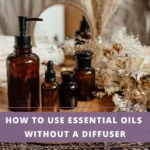

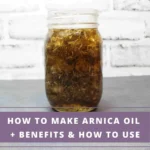
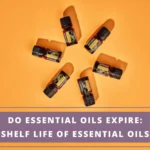

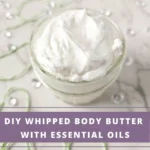
Leave a Reply